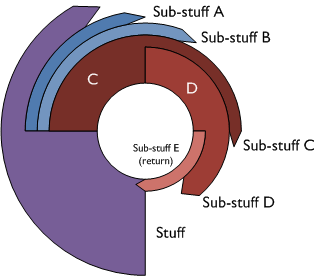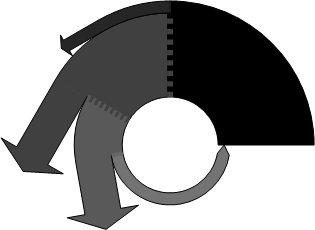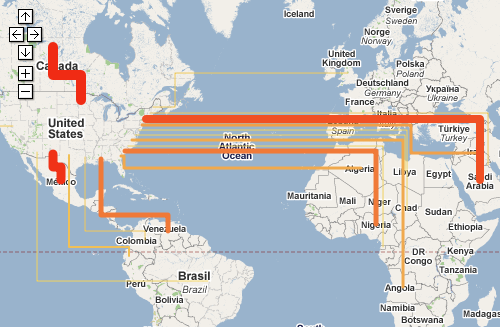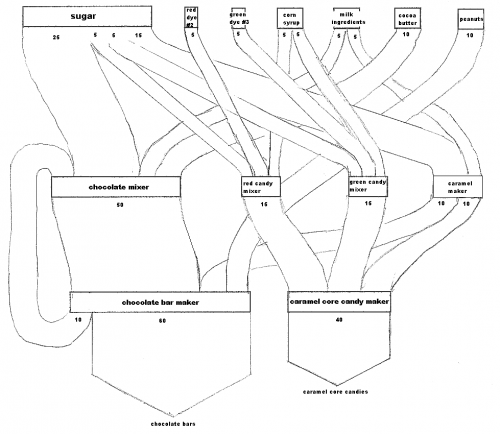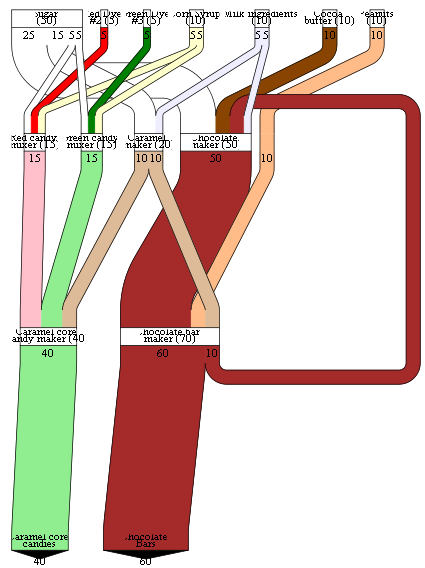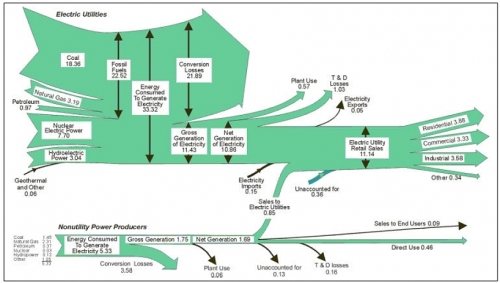Following yesterday’s post with the translation of a blog post by Chiqui Esteban from infografistas.com here is the translation of the post “Caudales, erogación… ¿flujo?” of April 5, 2009. Again, I left some words in Spanish in square brackets.
— translation start —
Volume flow, distribution… flux?
A new chapter in the discussion [polémica] about the ‘scientific’ name of the “little arms” graphics [‘gráficos de bracitos’].
Xocas came up with the name ‘volume flow’ diagrams [‘gráficos de caudales’] and my vote was for ‘distribution diagram’. Other suggestions were thrown in: Xoán G. made reference to Minard and his ‘capacity diagram’ [‘gráfico de aforo’]. Herminio J. Fernández voted for cosmography diagrams [‘cosmografías’] as refered to by Stovall [Infographics by James Glenn Stovall, Allyn&Bacon, Massachussetts, 1997]. Many others voted for ‘flow diagrams’ [‘gráficos de flujo’], although Xocas discarded this suggestion because “the term flow diagram normally refers to a very specific type of visualization of process [flows]. It could be used as a generic term, but has interference with another model”.
Now, there is a new player in our conversation. It is Mario Tascón, who also believes that the correct denomination is ‘flow diagrams’. His justification:
“According to Harris (Information Graphics) and Bruce Robertson (How to make Charts and Diagrams) these graphics are called flow diagrams, and are of the type in the same category which are used as decision diagrams in informatics [computer science]. The latter are more in fashion now [Por motivos de modas], but the former have always [sic!] existed (a historic example is the one of Napoleons troops)”.Suggestions are welcome in the comments.
— translation end —
I hope I got it more or less correct. It is not easy to find the right translation for the sometimes subtle differences between the terms. For those of you who can read Spanish, please check out the original post and the full discussion thread on Xocas’ blog.
The post is decorated with this beautiful Sankey diagram.
It shows the main earnings and spendings of Spain in 2008 and was produced by Jorge Doneiger and Álvaro Valiño for the daily newspaper Publico in 2007. Values are in million Euros. Flows are not always to scale as for as I can see: the ‘impuestos especiales’ in dark black and the ‘deuda pública’ (at the bottom on the right side) are examples.
The top part shows the sources of funding, the bottom part the beneficiary sectors. The fact that the stacked width in the middle is wider than that of the funds distributed suggests that the Spanish state is actually piling up its money, but probably this has to do either with the list of recipients not being complete, or with earnings received in 2008 but not distributed in the same year.
The hand with the coin supports Chiqui Esteban’s vote for naming it a ‘distribution diagram’. Toss a coin in the coffee dispenser and wait for your coffee to be poured… errh, did we have ‘dispenser diagram’ already? 😉
I save the ‘best of comments’ and my reasoning why I still call them Sankey diagrams for another time…
Note (Aug 19): A case of DYRF, do your research first! I just detected that Chiqui himself has an English version of his article here. So, now you got the choice between two versions!


